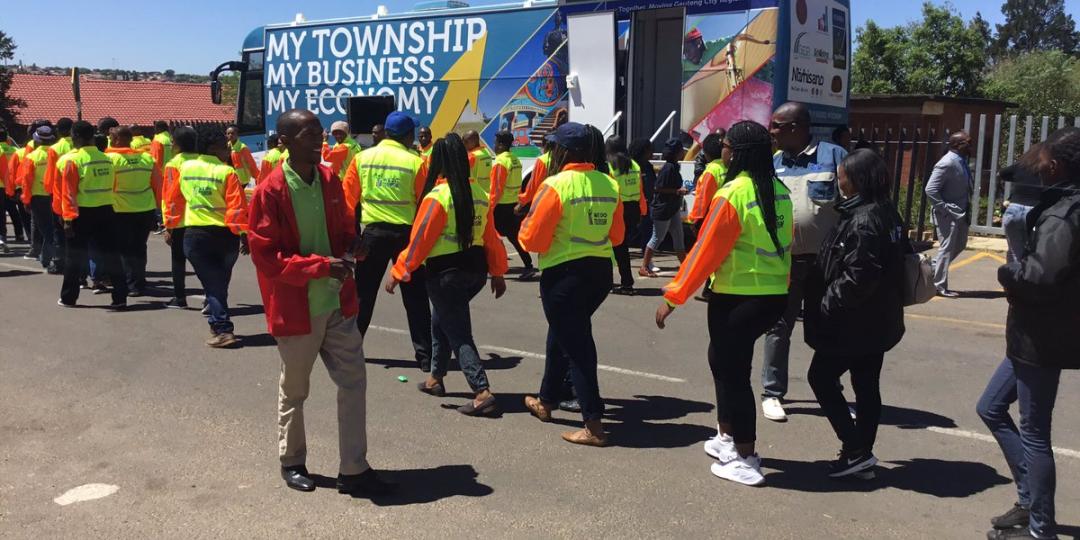The Department of Tourism is reviewing the training curriculum for tourism monitors, where they are recruited from and where they are deployed to in terms of identified hotspots and other medium- to high-crime areas in South Africa.
There will also be a request to increase the budget for the Tourism Monitors Programme (TMP).
This was announced earlier this week by Minister of Tourism, Patricia de Lille, as part of a raft of tourism safety interventions agreed to by government and the private sector earlier this week
The Minister met MECs for Tourism, the South African Police Service, the private sector – including the Tourism Business Council of South Africa (TBCSA), Barsa, FEDHASA, SATSA and SATVITO – and the National Prosecuting Authority, to discuss tourism safety and actions that the government, in partnership with the private sector, will take to enhance tourism safety.
The stakeholders discussed the risks related to tourism and the strategies and actions that needed to be implemented to improve tourism safety as agreed in the 2018 Tourism Safety Strategy. This strategy has, however, yet to be properly implemented due to the COVID-19 pandemic. “But I am determined that, together with our partners, we now need to address tourist safety with clear actions and timelines,” said De Lille.
The Minister said while the initial 2023/24 financial year Departmental budget was R174.5 million (€8.7m) to train 1 845 Tourism Monitors across the country, she had asked the department to increase the number of monitors to 2 215.
In the previous financial year, the Department trained more than 2 500 monitors in all provinces. The Tourism Monitors programme has come to an end and, therefore, currently there are no tourism monitors out there.
“Today, I made a call on the various MECs to also make part of their Expanded Public Works Programme budget available to fund the training of more Tourism Monitors,” said De Lille.
The monitors will be deployed to all provinces at top tourist attractions and national parks, especially high- and medium-risk areas.
“We have identified, in consultation with the private sector, 59 hotspots across the country. The deployment of Tourism Monitors will be prioritised to service these sites,” said De Lille.
She noted that the government and private sector also had to work “hand-in-hand” with communities located in tourist attraction areas to take ownership of their community and understand the value and need to protect the tourist spaces around them. Communities must understand and be brought on board to help grow tourism in their areas.
MoU with SAPS
De Lille pointed out that there was a memorandum of understanding in place between the Department of Tourism and the South African Police Service that was signed in 2019 to work on various measures to enhance tourism safety.
This includes the SAPS Learning and Development Programme offered to tourism monitors and entails the following:
Crowd Management – Manage large crowds during local/international events at deployed sites.
Legal Framework – A mandate for Human Rights around specific relevant crimes.
Reporting – The duties of the first responder (gathering information, basic interviewing skills; incident reporting and taking statements).
Crime Prevention – Crime prevention concepts (e.g.) security, risk, vulnerability; crime displacement; guarding; patrols and access control.
Background on TMP
The TMP is part of the broader government intervention that involves training, mentorship and deployment of unemployed youth in identified tourism attractions and sites.
The main objectives of this programme are enhancing tourism safety awareness at key tourism attractions and sites, upskilling of unemployed youth and reducing tourist vulnerabilities.
The key performance areas of the appointed Tourism Monitors include but are not limited to: patrolling within the identified attractions and site/areas; raising tourism awareness and providing information to tourists; and reporting any crime incidents to SAPS and other relevant enforcement agencies.























